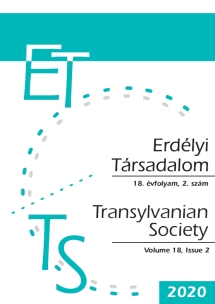Ezüst gazdaság Romániában. Érmelléki esettanulmány
Silver Economy in Romania. Érmellék Case Study
Author(s): Katalin Gál, Rita PásztorSubject(s): Micro-Economics, Labor relations, Welfare systems, Health and medicine and law, EU-Approach / EU-Accession / EU-Development
Published by: Presa Universitara Clujeana
Keywords: silver economy; active aging; quality of life of the elderly; social care; employment of the elderly; social participation of the elderly;
Summary/Abstract: After the regime change in Romania significant changes in the structure of the population can also be observed, one aspect of which is aging. Our research examines the Romanian aspects of the silver economy on the example of Érmellék micro region. The studied North Bihor area is a disadvantaged micro-region where the social and economic changes of the last 30 years have not brought an easier life. These social changes can be seen in ethnic change, aging, the feminization of aging, and low educational attainment. According to economic indicators, people living here are characterized by low income and commuting lifestyle for working purposes. Accession to the European Union is mostly reflected in the increase in the number of border crossings points and cross-border labor force migration in this region. Thus, our research concerns the examination of the situation of the aging and elderly generation in Érmellék along the measures and services of the silver economy. After defining the concept of the silver economy and presenting the dimensions of the Active Aging Index, an analysis of the empirical data follows. Our study interprets the silver economy as a set of economic opportunities that address both the public and consumer expenditures associated with an aging population and the specific needs of the population over 50 years. During the data processing, through qualitative approach of the elderly population quality of life, we sought the answer to the question of the extent to which the silver economy, or some of its dimensions, can be accessed in Érmellék. In our study, we integrated the analysis of information from focus group interviews, professional and in-depth interviews in the framework of the exploratory research into the dimensions provided by the Active Aging Index. Along with the applied analytical logic, the presentation of the individual dimensions was supplemented with the processing of qualitative empirical material in addition to the secondary data, so we could get to know the conditions of active aging in Érmellék and the possibilities of the regional silver economy.
Journal: Erdélyi Társadalom
- Issue Year: 18/2020
- Issue No: 02
- Page Range: 75-98
- Page Count: 24
- Language: Hungarian

